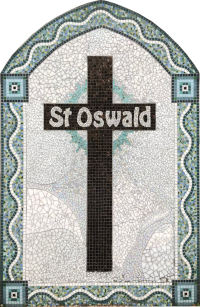St Andrew, whose feast day ends the Christian year on 30th November, is probably best known to us as the patron saint of Scotland.
The Gospels record that Andrew was one of the first disciples of Jesus, and the very first to bring someone else to Christ – his own brother.
Like many fervent Jews at the time, Andrew and an unnamed companion had been drawn to the desert, to be taught by the charismatic prophet known to us as John the Baptist. John told the crowds. ‘Prepare the way of the Lord! One comes after me who is greater than I am.’
So when one day John pointed out Jesus to Andrew and his friend and described Him as the ‘Lamb of God’, the two young men assumed that the next stage of their spiritual search was about to unfold. So, as Jesus made off, they followed Him.
When Jesus turned and asked them what they were ‘seeking’, they were tongue-tied, and all they could come up with was a lame enquiry about his current place of residence: ‘where are you staying?’
The reply of Jesus was the most straight-forward invitation anyone can receive: ‘Come and see’. Come and see what I’m like, what I do, the sort of person I am. What an invitation!
The results of their response were in this case life-changing – for themselves, and for many other people. For Andrew then brought his brother, Peter, to Jesus. And soon the little apostolic band who would carry the message of Jesus to the whole world was being formed.
Andrew became the patron saint of Scotland because some of his bones were reputedly transported to Fife in the 8th century, and preserved at a church in a place now named St Andrews.
But there are so many legends about him all over Europe and the Middle East, that it’s safest to stick to what the Gospels tell us – though the strong tradition that he was martyred by crucifixion is probably true and is perpetuated in the ‘St Andrew’s Cross’, the ‘saltyre’ of Scotland.
Posted 28th November.

